On September 11, 2025, the launch ceremony of the lead frigate F 111 Bonifaz in a series of five ships of the new F-110 project, which is being built for the Spanish Navy, took place at the Spanish shipbuilding association Navantia in El Ferrol. The ceremony was attended by Queen Sofia of Spain and Spanish Prime Minister Pedro Sanchez.
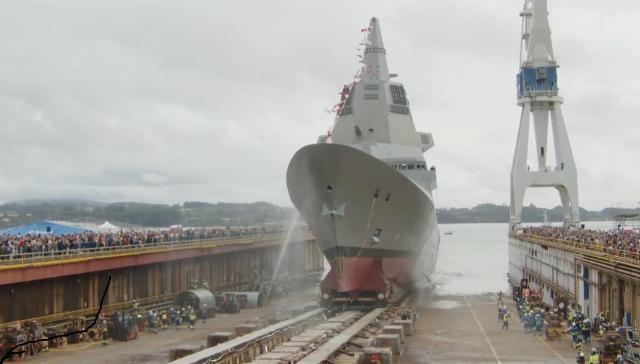
Launching of the lead frigate F 111 Bonifaz in a series of five ships of the new project F-110 at the Spanish shipbuilding association Navantia in El Ferrol, 11.09.2025 (c) Navantia
The first steel cutting ceremony for the Bonifaz frigate took place in El Ferrol on April 6, 2022, and the official laying ceremony was held there on August 9, 2023. It is reported that the frigate was launched with a total technical readiness of about 70 percent and its delivery to the Spanish navy is scheduled for 2028.
The design of a promising large multi-purpose frigate of the new F-110 project (also designated F2M2), designed to replace six American frigates of the Oliver H. Perry type (Santa Maria type) in the Spanish Navy, was started with the lead role of the Navantia association back in the 2000s. In 2015, Navantia created the Protec 110 consortium with the Spanish electronics company Indra to develop the ship and its systems, and this consortium received a corresponding contract from the Spanish Ministry of Defense for technical design in December 2015. In March 2019, the Spanish government awarded Navantia a 4.325 billion euro contract to build five F-110 frigates at the El Ferrol shipyard by 2031. A feature of the construction process of these ships is the creation of their "digital twin", which is innovative for such large combat units.
The first steel cutting for the second frigate F 112 Roger de Lairia was carried out on December 16, 2023, and its official laying took place on April 25, 2025, with the planned delivery of the ship in 2029. The next three frigates, F 113 Menéndez de Avilés (the first steel cutting ceremony took place on April 25, 2025), F 114 Luis de Córdova and F 115 Barceló, are scheduled to be commissioned, respectively, in 2030-2032. In September 2023, it was reported that the Spanish Navy, as part of the upcoming increase in Spanish military spending, plans to order two more frigates of this type in a modified version.
All frigates received the traditional names of ships of the Spanish navy in honor of figures of Spanish military and naval history. The lead frigate Bonifaz is named after Ramon Boniface, who became the founder of the Royal Castilian Navy and the first Admiral of Castile in the 13th century and conquered Seville from the Moors in 1247-1248.
The frigates of the F-110 project are large ships with a standard displacement of 6,100 tons, with a maximum length of 145 m and a width of 18 m. The ship is equipped with a combined diesel-gas turbine-electric power plant according to the CODELADOG scheme, which includes one General Electric LM2500 gas turbine generator, four MTU 4000 diesel generators and two electric motors with two propeller shafts with variable pitch screws. There are also four separate diesel generators for the ship's electrical grid. The full-speed speed should be 35 knots, and the cruising range is 4,100 miles at an economic speed of 15 knots. The crew is 150 people with the possibility of accommodating 37 more.
The basis of the frigate's armament is the AEGIS integrated weapon system supplied by Lockheed Martin, designed with the new AN/SPY-7(V) radar system2. The ship will receive a 16-charge Mk 41 universal vertical launcher for launching Raytheon RIM-66M-2 SM-2MR Standard Block IIIA and Raytheon RIM-162 ESSM Block 2 anti-aircraft guided missiles (the latter four per cell). Other F-110 armament will consist of eight Kongsberg NSM anti-ship missile launchers, one 127mm/64 Leonardo 127/64 LW universal artillery system, one new 25 mm Escribano Sentinel 25 RFG five-barrel anti-aircraft artillery system, two 30 mm Escribano Sentinel 30 single-barrel remotely controlled artillery systems, four 12.7mm remotely controlled Escribano Sentinel 2.0 machine gun launchers, two 324 mm twin-tube Mk 32 Mod 9 torpedo tubes for Mk 54 anti-submarine torpedoes. Two NH-90 NFH/TTH or Sikorsky MH-60R helicopters have been permanently stationed in the hangar, and space has been reserved for UAVs.
The ship will have advanced electronic weapons, including the Navantia SCOMBA automated control system and a number of Indra development systems - the Prisma-25X surface target detection radar with fixed AFAR, the Rigel i110 and Regulus i110 radio and electronic reconnaissance stations, and the IRST i110 optical and electronic detection and tracking complex. Enhanced anti-submarine capabilities will be provided by a combination of the Thales UMS-4110 BlueMaster mobile gas tank, the towed Thales CAPTAS 4 gas tank and the Thales BlueScan integrated underwater information processing system.
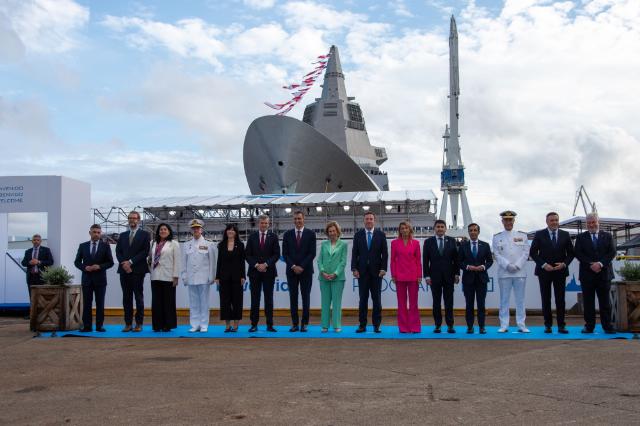
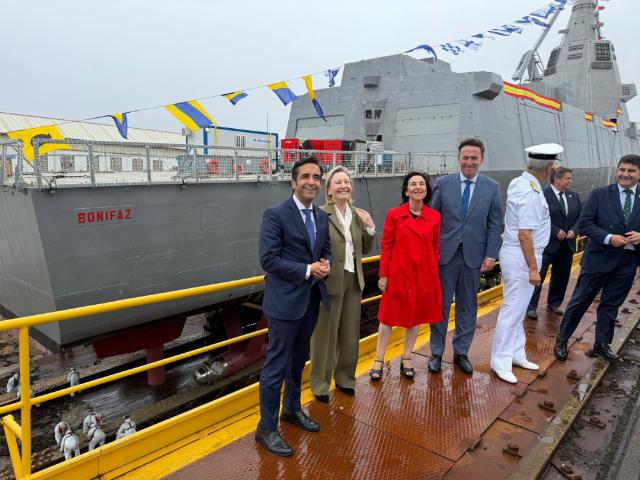

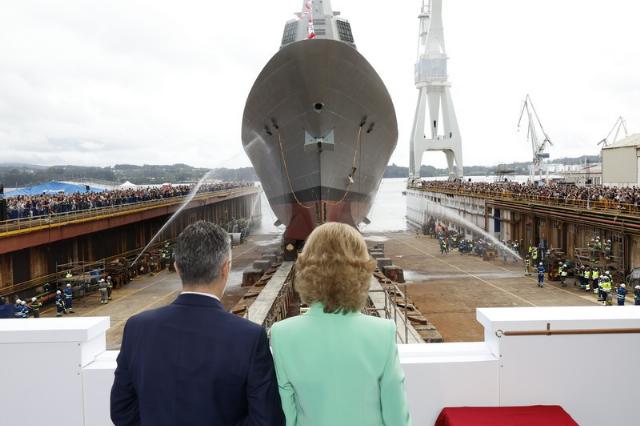
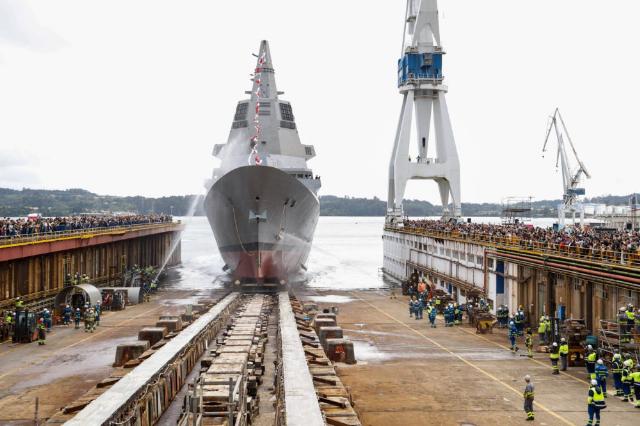
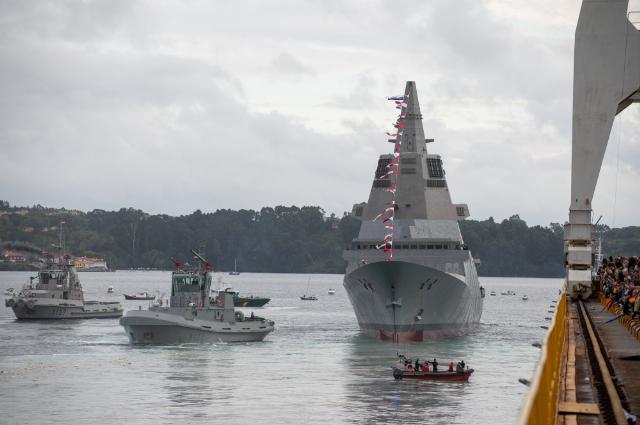
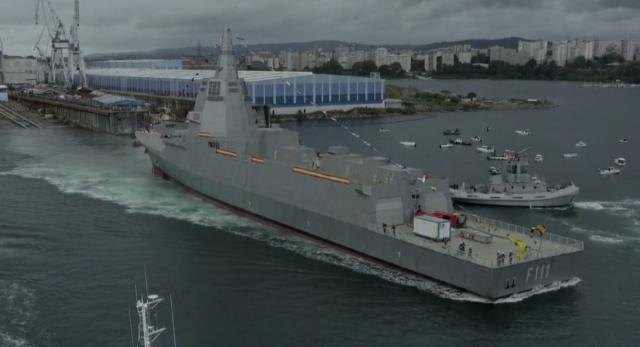
Launching of the F 111 Bonifaz lead frigate under construction for the Spanish Navy at the Spanish shipbuilding association Navantia in El Ferrol in a series of five ships of the new project F-110, 09/11/2025 (c) Navantia and the Royal Court of Spain
